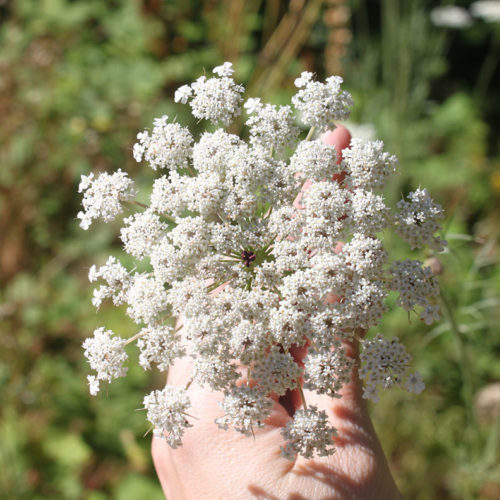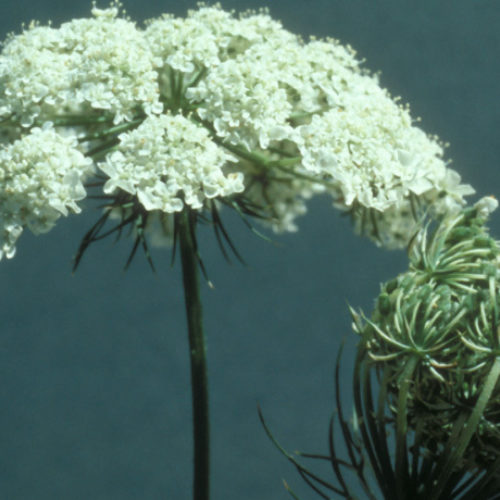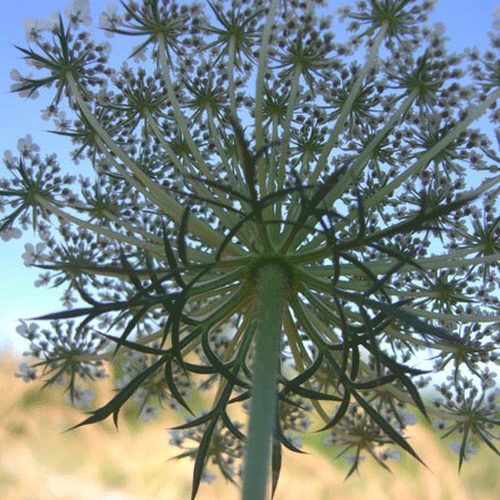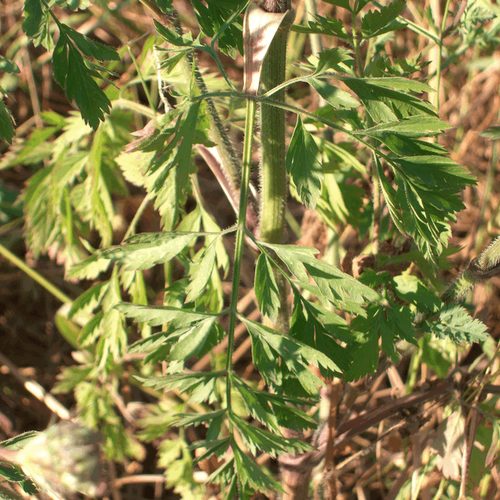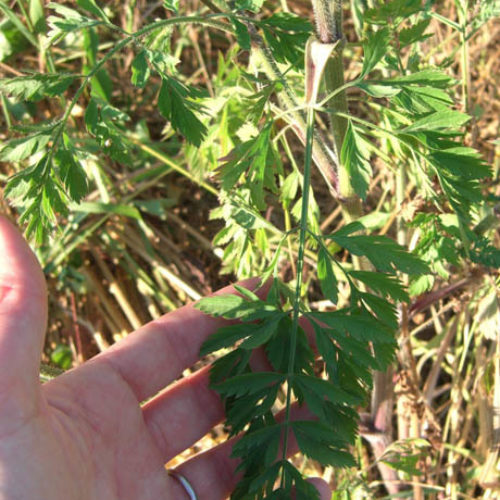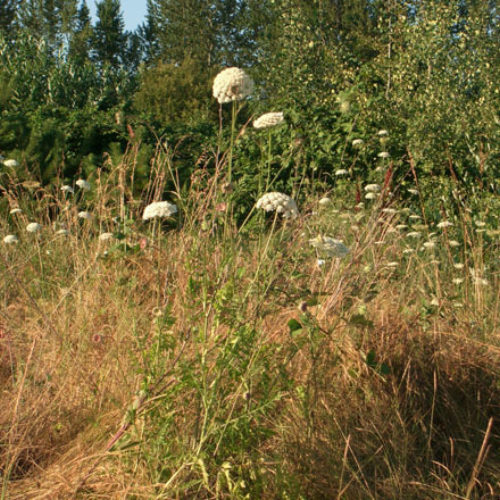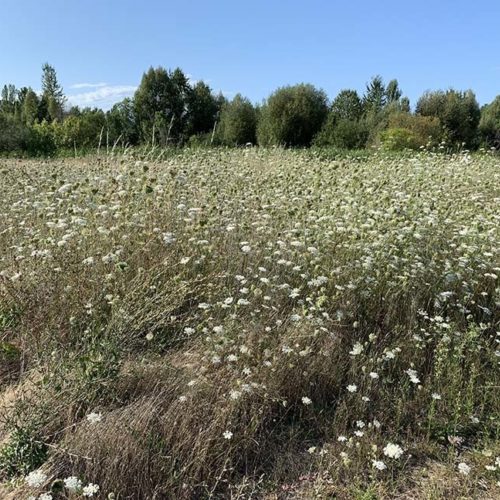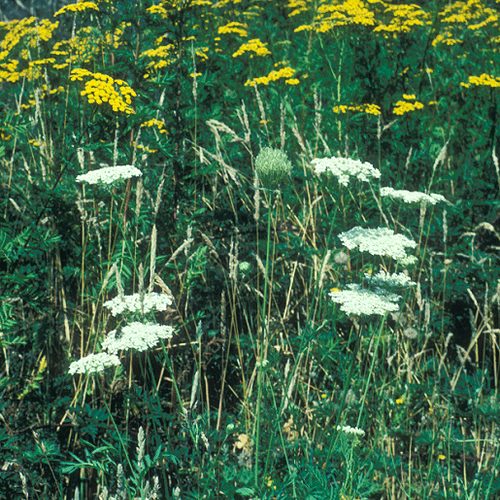Wild Carrot
Daucus carota
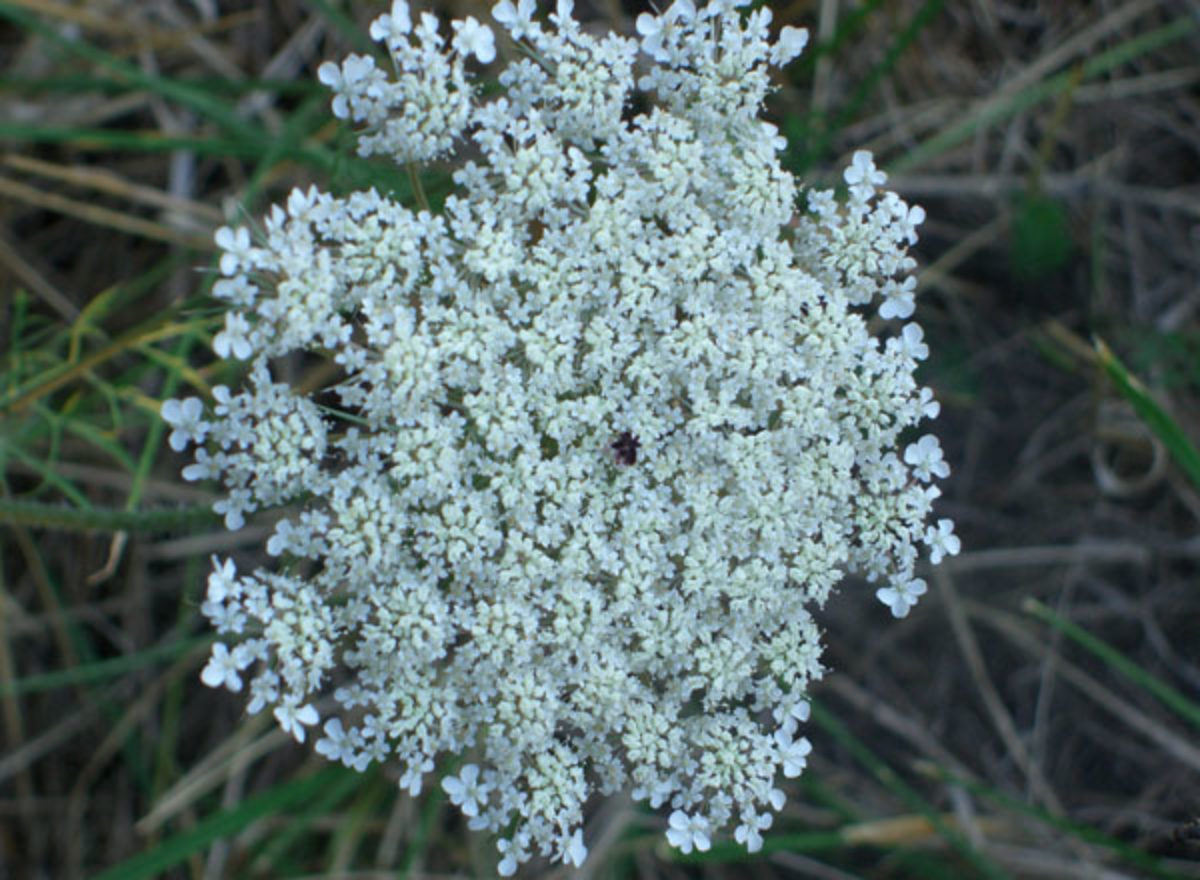
Family: Apiaceae
Other Common Names: Queen Anne's lace
Weed class: C
Year Listed: 1988
Native to: Europe, Asia and Northern Africa
Is this Weed Toxic?:
not known to be
Legal listings:
This plant is also on the Washington State quarantine list. It is prohibited to transport, buy, sell, offer for sale, or distribute plants or plant parts of quarantined species into or within the state of Washington or to sell, offer for sale, or distribute seed packets of seed, flower seed blends, or wildflower mixes of quarantined species into or within the state of Washington. Please see WAC 16-752 for more information on the quarantine list. For questions about the quarantine list, contact the Washington State Department of Agriculture's Plant Services Program at (360) 902-1874 or email PlantServices@agr.wa.gov.
Why Is It a Noxious Weed?
It out competes native grasses for resources. It can taint milk if dairy cows ingest large amounts. It may be mildly toxic to livestock. Wild carrot may cause poor seed production with commercial varieties through hybridization. Wild carrot (except where commercially grown) was changed from a Class B to a Class C noxious weed in 2013.
How would I identify it?
General Description
It is an upright, taprooted herb, reaching 1 to 4 feet tall. It may occur as an annual or short-lived perennial. The species is often a biennial that bears a rosette of leaves its first season. The entire plant is covered with coarse, stiff hairs.
Flower Description
Flowers are small, white and borne in compound flat-topped umbels. The umbels are 2 to 4 inches in diameter. They have purple or pinkish flowers in the center.
Leaf description
Leaves are fern-like with small toothed leaflets. The segments are linear or lance shaped.
Stem description
No data supplied
Fruit Seed Description
no info provided
May Be Confused With
Similar to other plants in the Apiaceae (carrot) family when young. From a distance, wild carrot (Daucus carota), a Class C noxious weed, may be confused with poison hemlock, although wild carrot is smaller and doesn’t have purple blotches on the stems.
Where does it grow?
Wild carrot is found in meadows, pastures, roadsides, and waste places. Please click here to see a county level distribution map of wild carrot in Washington.
How Does it Reproduce?
Wild carrot reproduces by seed. Estimates of seed production vary from 1,000 to 40,000 seeds per plant.
How Do I Control It?
Mechanical Control
Hand-pulling or mowing, during the first year when the plants are 7 - 10 inches tall, can be effective.
Cultural Control
Establishing and maintaining healthy stands of native, desirable vegetation can reduce wild carrot infestations.
Biological Control
Since wild carrot and commercial carrot are the same species, classical biological control is not a viable option.
Herbicide Control
Please refer to the PNW Weed Management Handbook, or contact your county noxious weed coordinator.
For More Information
See our Written Findings for more information about wild carrot (Daucus carota).
Report on wild carrot from the book "Weed Control in Natural Areas in the Western United States"
Whatcom County NWCB Fact Sheet on wild carrot



